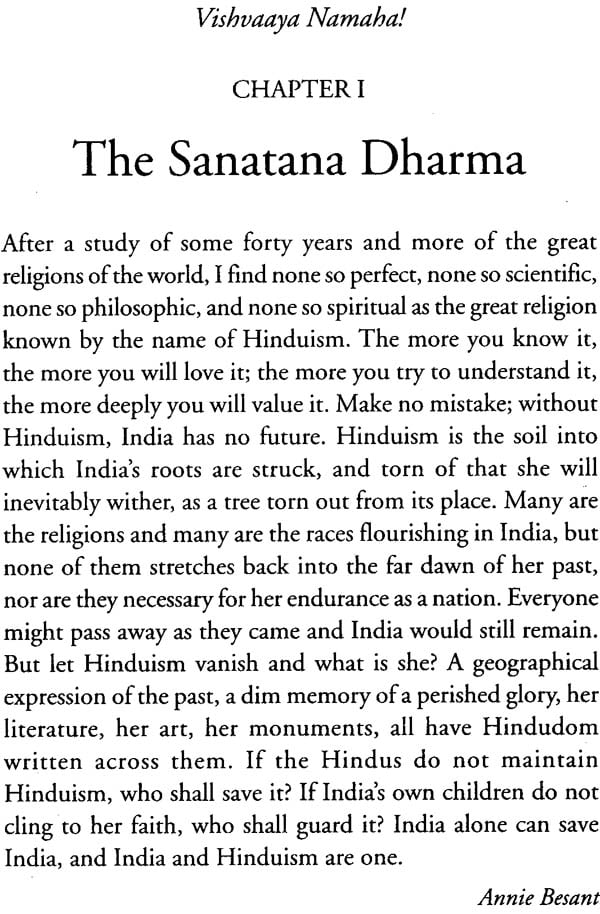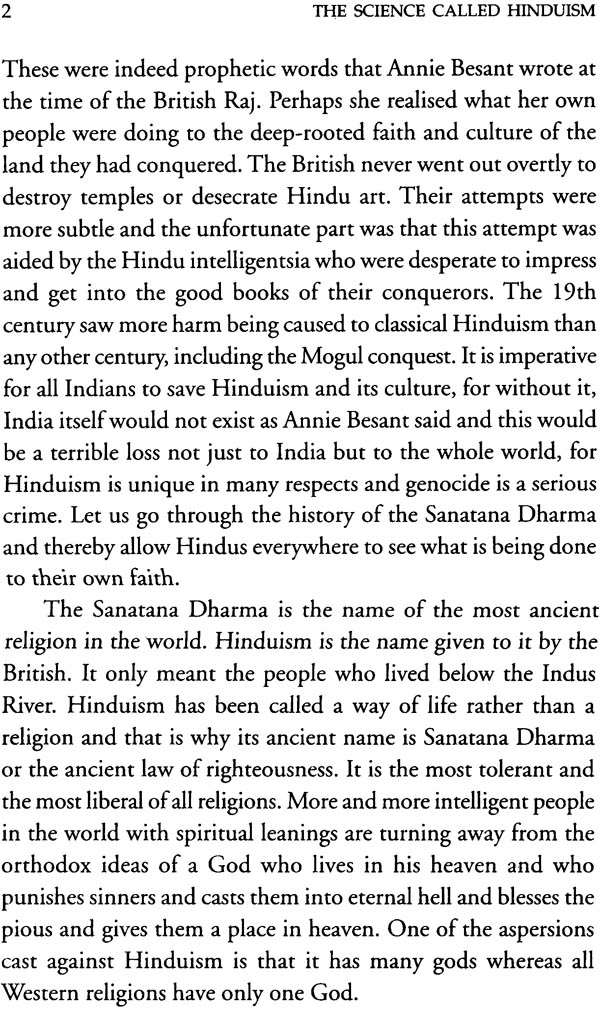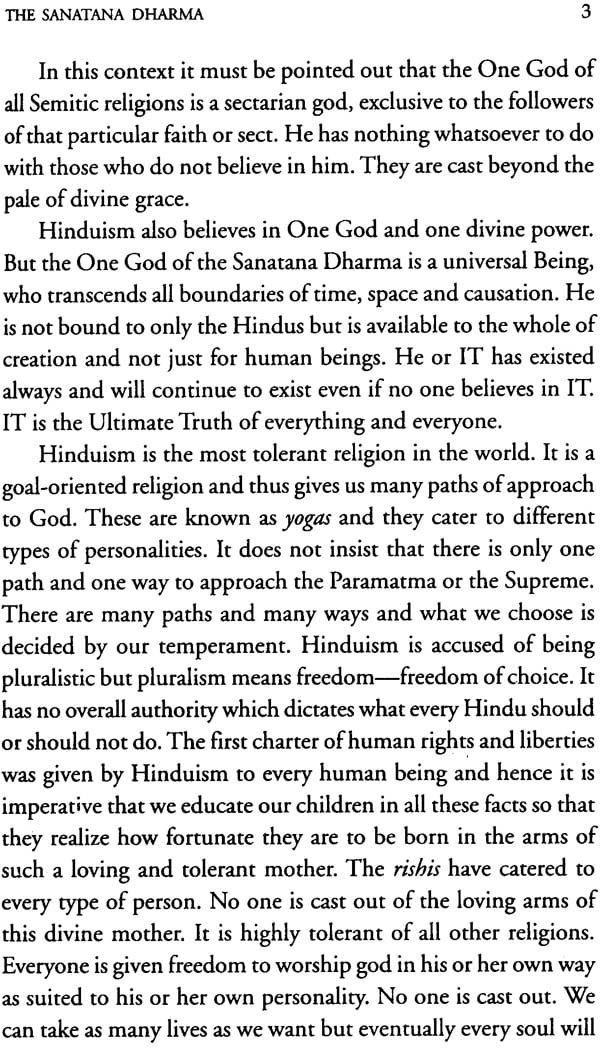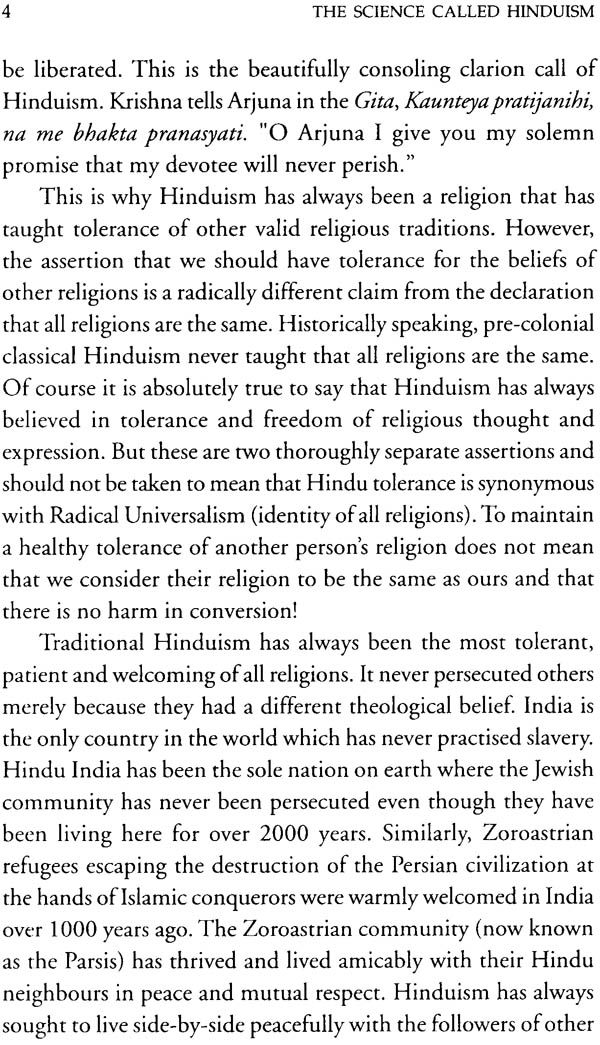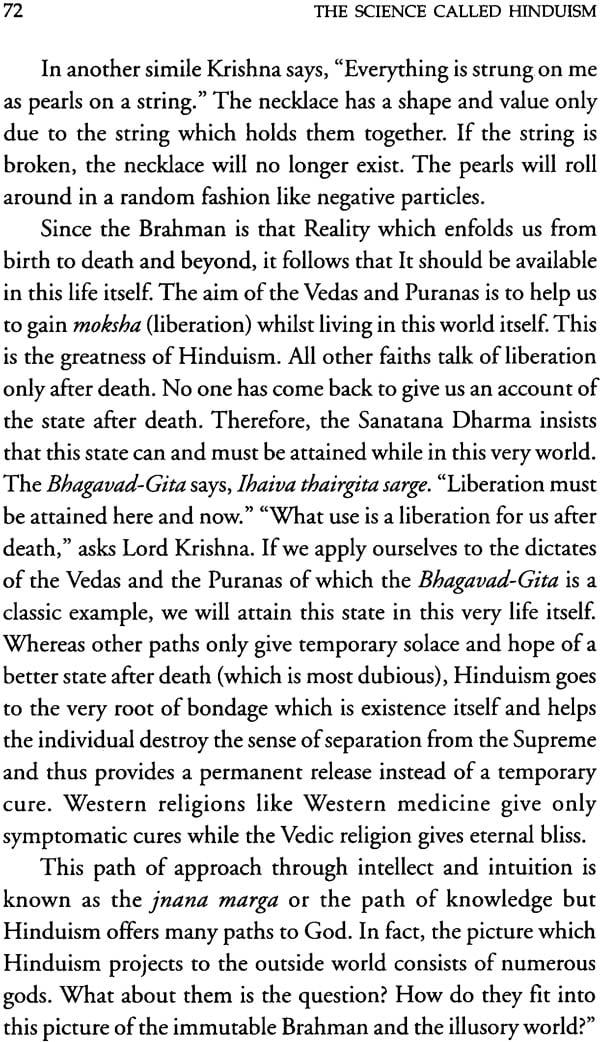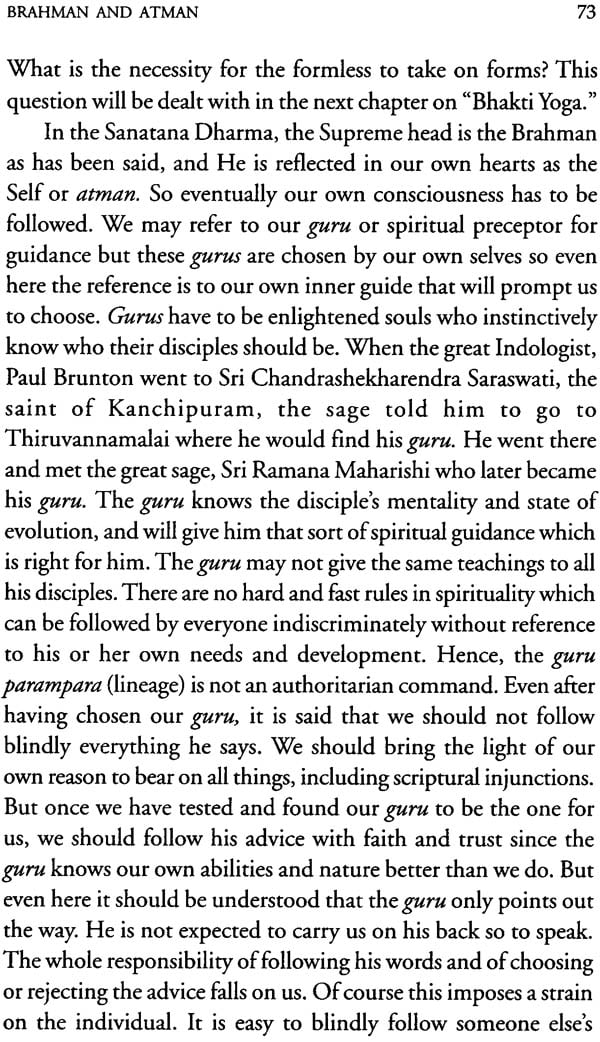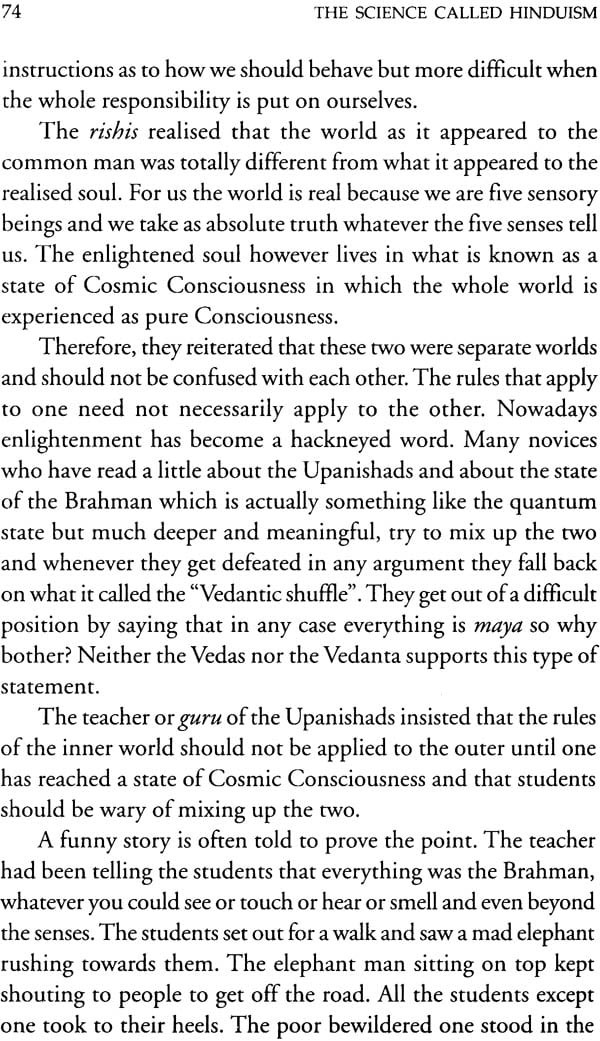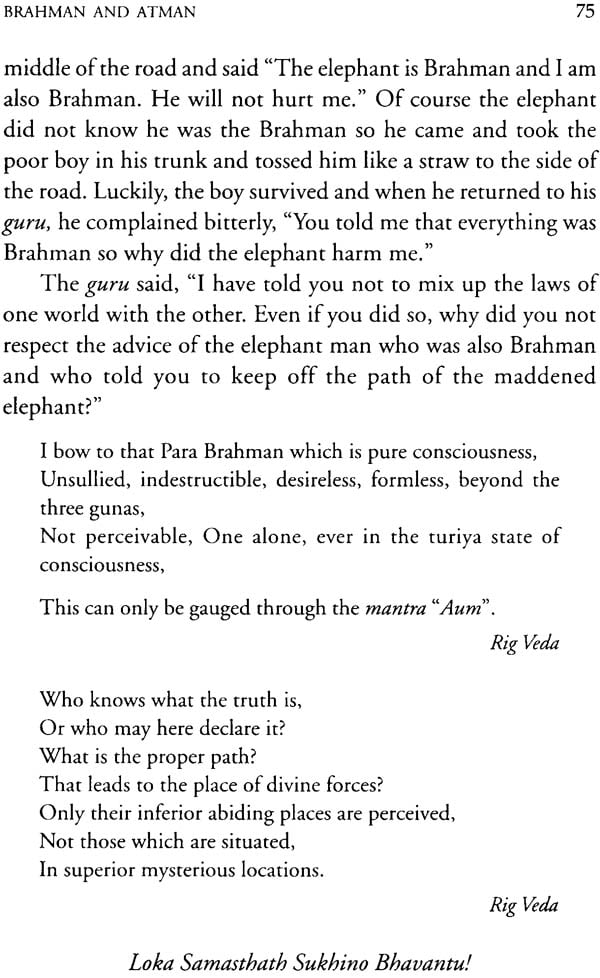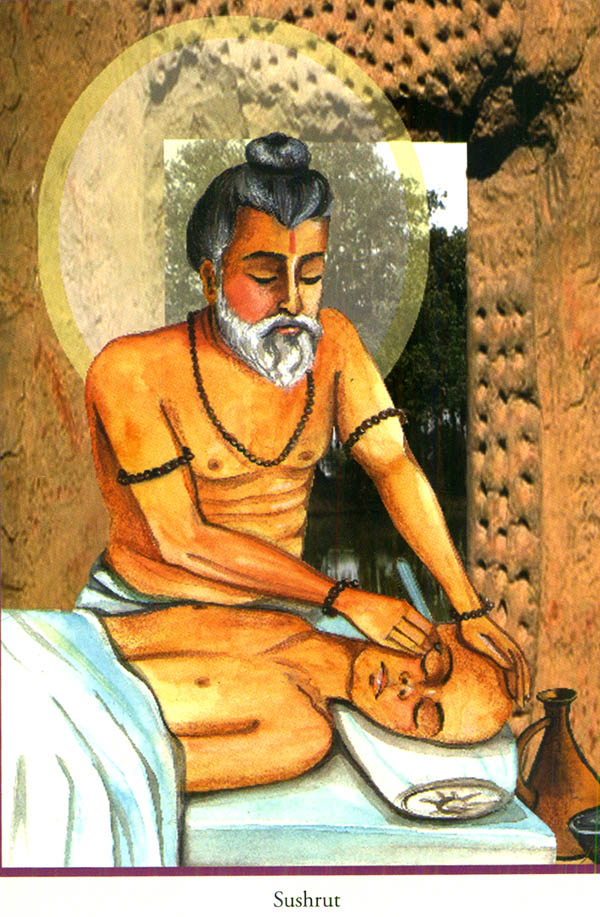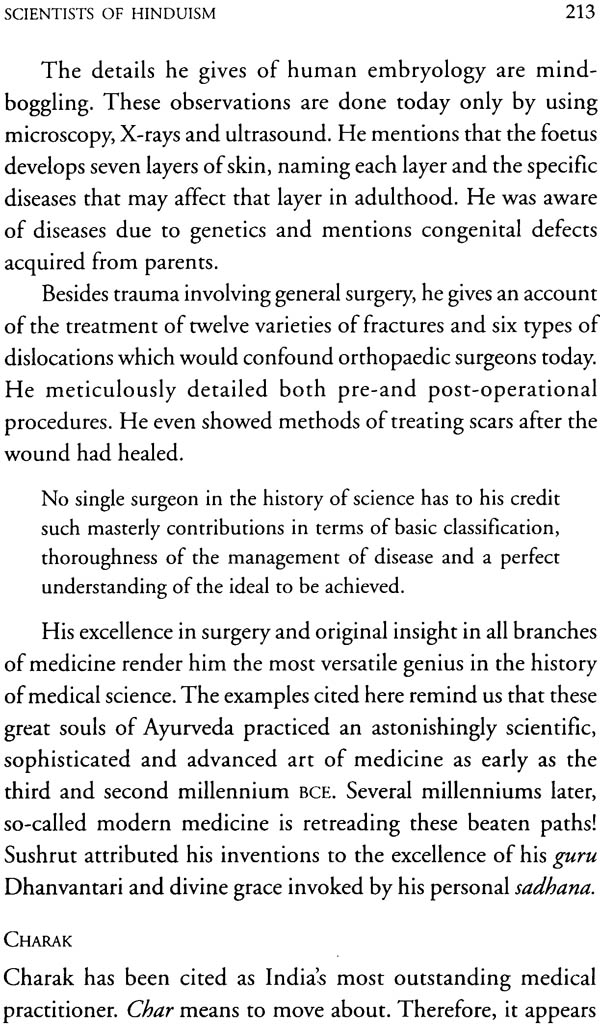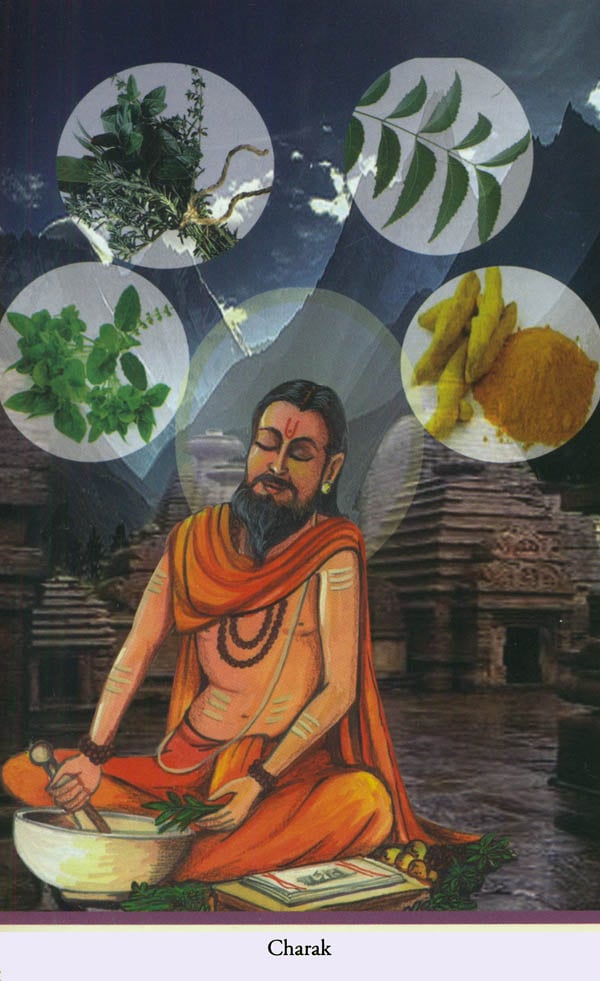
The Science Called Hinduism (The Play of the Divine in the Form of the Rishis)
Book Specification
| Item Code: | NAF524 |
| Author: | Vanamali |
| Publisher: | ARYAN BOOKS INTERNATIONAL |
| Language: | English |
| Edition: | 2013 |
| ISBN: | 9788173054624 |
| Pages: | 304 (10 Color Illustrations) |
| Cover: | Hardcover |
| Other Details | 9.0 Inch x 6.0 Inch |
| Weight | 510 gm |
Book Description
The highest spirituality indeed moves in a free and wide air far above that lower stage of seeking which is governed by religious from and dogma. It does not easily bear their limitations and, even it admits, it transcends them; it lives in an experience which to the formal religious mind is unintelligible. But man does not arrive immediately at that highest inner elevation and if it were demanded from him at once, he would never arrive there. At first he needs lower support and stages of accent, he asks for some scaffolding of dogma, worship, image, sign, from, symbol, some indulgence and permission of mixed half natural motive on which he can stand while up in him the temple of the spirit. Only when the temple is completed, can the supports be removed. The scaffolding disappears. The religious culture which now goes by the name of Hinduism, not only fulfilled this purpose, but unlike certain other religions, it known its purpose. It gave itself no name because it set itself no sectarian limits. It claimed no universal adhesion, asserted no sole infallible dogma, set up no single narrow path or gate of salvation. It was not a creed or cult but a continuously enlarging tradition of the godward endeavor of the human spirit-an immense many-sided and many-staged provision for spiritual self-building. Therefore it had every right to speak of the only name it known, the eternal religion, the “Sanatana Dharma”.
“After a study of some forty years and more of the great religions of the world, I find none so perfect, none so scientific, none so philosophic, and none so spiritual as the great religion known by the name of Hinduism. The more you knew it; the more you will love it; the more you understand it, the more deeply you will value it. Make no mistake; without Hinduism, India has no future Hinduism is the soil into which India’s roots are stuck, and torn of that she will inevitably wither, as a tree torn out from its place.
Vanamali Mataji has resurrected the ancient gods of Hinduism and brought them to the notice of the world in a striking manner. She has written about all the favorite gods of Hinduism in a way as to make them glow and come alive before our eyes. It is high time that Hindus realised the greatness of their gods who are the backbone of their culture. In this book she has tried to show that Hinduism is not a bundle of superstitions but that it is a science in itself. Deep scientific truths are embedded in even the most apparently absurd superstitions of Hinduism. That is why it has endured the erosion of relentless time and the continuous onslaught of other cultures. Now at last it is emerging once again in all its glory. Hindus all over the world should awake from their lethargy and realize that they are the inheritors of a unique tradition and they have a duty to revive and keep it alive for it is the heritage of the entire human race.
I boldly proclaim Hinduism the greatest the greatest in the world. Hinduism’s venerable age has seasoned to maturity. It is the only religion, to my knowledge, which is not founded on a single historic event or proper, but which itself proceeds recorded history. Hinduism has been called the “cradle of spiritually” and the mother of all religions,” partially because it has influenced every major religion and partly because it can absorb all other religions-honor and embrace their scriptures, their philosophy.
India has maintained the longest, unbroken continuity of civilization in the whole world.
What is Truth and how is it to be known? Time alone is the touchstone of truth. However Much one tries to stamp out Truth, it shall not be overcome. Hence, which is based on Truth, can never be stamped out and has existed from the dawn of time. The universe exists on Truth and anything that is not founded on Truth is automatically deleted by Time. Many religions and many cultures have come and gone. One by one, they have been mown down by the relentless scythe of Time. Hinduism alone has remained. This is because it is based on the eternal verities satyam and dharma, truth, non-violence and righteousness. This is the cosmic dharma-the law of eternal justice by which this cosmos has been created, sustained and destroyed. That is why Hinduism is known as “Sanatana Dharma”, the ancient law of righteousness. It is a living relic of the ancient past of just India but the past of the whole history of humanity and thus it follows that Hinduism is the oldest religion. Much of the forms of Hindu couture today are same as they were more than ten thousand years ago. The ancient world never died in India. It still remains and can be contacted everywhere.
Actually, the word Hinduism is a monomer. It was the name given by the westerners to those who lived below the Indus River. The actual name of Hinduism is the Sanatana Dharma or the way of Eternal Righteousness. The ideas and beliefs of Hinduism have existed from immemorial. It has the ability to evolve with the changing times and this is the reason for its continued existence. Anything which is static and stagnant will eventually decay and die. Just as water has to flow in order to keep itself free of impurities, so also every religion must have ability to grow. Many of the ancient religions of countries like Egypt and Mesopotamia, which were really highly evolved, have been wiped off the face of the earth with the passage of time, whereas Hinduism has continued to exist. Western religions can be compared to a monolithic iron pillar, which is incapable of bending or giving way or changing. Hinduism, on the other hand, can be compared to a banyan tree which has spreading branches reaching out with ever more shoots and more ideas. That is why we find more religions within the Hindu faith than there are in the rest of the world put together. Thought its fundamental concepts are ancient, it is capable of accepting and even welcoming all new ideas which are consistent with dharma or righteousness.
There was no antagonism between science and religion in India as there was in the west since the religion is based on scientific truths. In the Isavasya Upanishad, the great sage Yajnavalkya says that there are two types of understanding, vidya and avidya. Usually we take avidya to mean ignorance. However, he gives a different interpretation. Vidya is eternal, experiential, spiritual knowledge or apara vidya, while avidya is external, experimental, material knowledge or apara vidya. We should make use of the second to guide our lives so that it leads us to the first. Unless both these types of knowledge are integrated into our lives, we will end up being blind or lame as Einstein put it. He who believes that science alone can take away all the miseries of our life is like a blind man entering a dark room. However, he who believes that it is only by chanting mantras in the solitude of a cave, is also entering blinding darkness. Hinduism has never held that blind faith can lead to liberation or that science alone can give you a Utopian life. Both are necessary for a fulfilled life.
Every time the Sanatana Dharma showed signs of declining, God Himself took an incarnation to revive it. As Lord Krishna told Arjuna in the Bhagavad-Gita, Yada yada hi dharmasya glanirbhavati, Whenever this dharma declines O Arjuna, I incarnate myself dharma samsthapanarthaya sambhavami yuge yuge, in order to re-establish this ancient dharma. Thus, our country has had many avataras as well as great sages who have incarnated themselves in every age in order to uplift the Sanatana Dharma and that is how it has retained its pristine glory for countless ages.
The westerners who came to India in the early part of the last century were totally incapable of appreciating the wonders of this ancient knowledge. This is because Hinduism is a most obscure and difficult religion to understand. What is generally exposed to the common eye is only the scum on top of the deep pond which contains a treasure of gems which are not easily available to the cursory glance. Hinduism is as difficult for the un-initiated to understand as quantum physics to the layman. In fact, it has great similarities to quantum physics; hence the title of this book is "The Science called Hinduism".
The object of writing this book is to try and make everyone understand and appreciate the great depth and beauty of this religion which has survived the test of time and withstood the onslaughts and challenges of countless other cultures which have tried to cast scorn on it and reduce it to nothing.
People have asked me how I dared to write about physics, which is an alien subject for me. My answer it that it is only my in-depth knowledge of Hinduism that has made it easy for me to understand quantum physics. The first time I read the Tao of Physics by Fritj of Capra, I was struck with wonder for I instinctively understood what the physicist was trying to say. Many of the abstruse points in the Bhagavad-Gita suddenly became crystal clear to me. Later, when I went through the Puranas, I was again struck at the amazing ways in which the great saints of the Puranas-Vyasa and Valmiki-had woven great scientific truths into their stories. These scientific truths are not what the ancient western world believed to be true but the truths of the most modern kind-that of quantum physics.
| List of Illustration | ix | |
| Essentials of Hinduism | xi | |
| Introduction | xxv | |
| 1 | The Sanatana Dharma | 1 |
| 1I | The Rishis | 19 |
| III | The Vedas | 36 |
| IV | Brahman and Atman | 61 |
| V | The Upanishads | 76 |
| VI | The Puranas | 104 |
| VII | Bhakti | 129 |
| VIII | Karma | 138 |
| IX | Advaita Vedanta | 148 |
| X | The World of Maya | 164 |
| XI | Desha and Kaala (Space andTime) | 181 |
| XII | Vedic Astronomy and Astrology | 194 |
| XIII | Scientists of Hinduism | 208 |
| XIV | Astronomy and Mathematics | 233 |
| XV | Mantras and Yantras (Symbols) | 237 |
